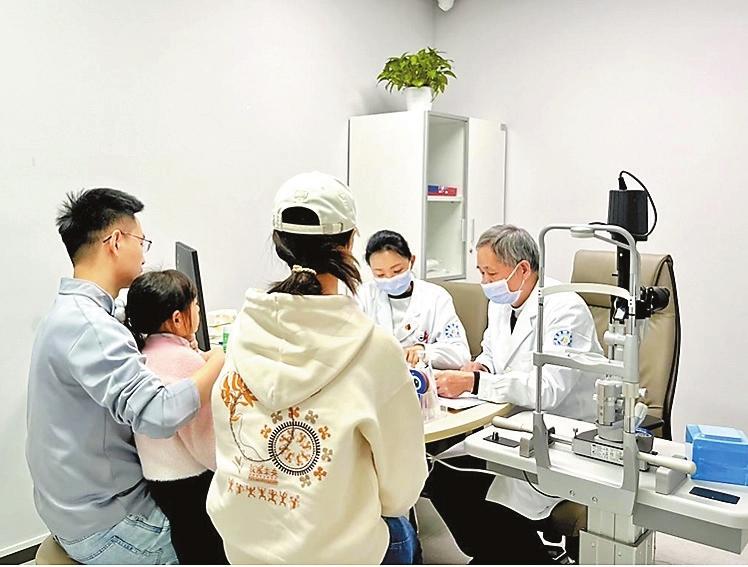
Debra Li debra_lidan@163.com IN China, about three to five out of every 100 children suffer from amblyopia, the most common cause of vision loss in children. The problem develops when a child is an infant or very young and can get worse over time if it’s not treated. This Saturday morning, Yan Jianhua, a veteran specialist from Guangzhou’s Zhongshan Ophthalmic Center at Sun Yat-sen University, began treating amblyopia patients at Shenzhen Bright Eye Hospital (also known as “Purui” in pinyin) in Nanshan District. “Thanks to the Chinese policy that allows qualified physicians to practice at multiple sites, I can save Shenzhen patients time traveling,” Yan, who now travels to Shenzhen once each month to see his patients in the city, told Shenzhen Daily. Yan and his team treat more than 5,000 patients at their Guangzhou hospital each year, many of whom have traveled from nearby cities or provinces to seek professional care. Dozens of patients were already waiting Saturday morning before Yan attended a brief welcoming ceremony and began advising patients. “If a child has amblyopia, one of their eyes has blurry vision and the other has clear vision. Their brain starts ignoring their blurry eye and only uses the eye with clear vision to see. As their brain relies more on their stronger eye, their weaker eye’s vision becomes even worse over time,” Yan explained. “It’s not always easy to tell if your child has amblyopia,” the doctor continued. “Most kids aren’t diagnosed until an eye care specialist gives them a checkup.” Yan suggested that parents be alert and seek professional help if their child favors one side of their body, shuts one eye or squints a lot, frequently tilts their head to one side, or has crossed eyes. Amblyopia has various causes like refractive errors, including myopia, hyperopia, and astigmatism, or structural eye conditions, Yan said, adding that genetic influences, premature birth, or low birth weight (less than 2,500 grams) are risk factors. He suggested that parents of kids at higher risk take them to see a doctor at age 3, and if diagnosed, follow up with treatments every three months. If amblyopia isn’t treated, it can permanently affect a child’s vision. The good news is that amblyopia is reversible if treated early enough, especially before age 6. “In fact, many local Chinese governments, including those in Shenzhen and Guangzhou, offer regular eye checks on campuses,” Yan said. “Wearing suitable glasses and eye patches is the most effective and simple treatment. It’s important that parents make sure their children follow the doctor’s instructions,” Yan said, adding that about half of the cases might also need surgical interventions. | 
